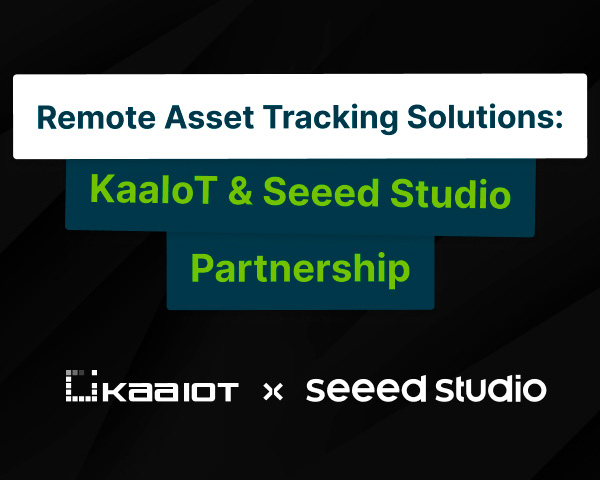Top 8 IoT Applications for Logistics
Logistics and transportation are some of the major industries adopting IoT at scale. As standards for speed and accuracy in logistics operations rise, technology helps companies to ensure superb quality of service while optimizing costs. Most importantly, IoT applications for logistics address a large number of use cases along a typical supply chain, from warehousing to fleet management and cargo tracking, thus being a true force behind the industry’s digital transformation. The following top 7 applications demonstrate how to strategically implement IoT technology for end-to-end supply chain management.
Inventory tracking and analytics
Companies can use a variety of methods for transparent inventory tracking. While traditional barcodes are good for basic inventory, smart labels and RFID tags provide much broader capabilities for automation and analytics. These IoT-powered methods use microchips that can carry all the information about the product that you need and be updated in real time for complete visibility into inventory movements. They also improve accuracy and reduce error-prone manual operations via automated scanning of inbound and outbound items.
Optimized warehousing
Warehouse management hugely benefits from remote storage conditions monitoring. By using IoT-powered sensors, companies can easily set up rules for maintaining stable temperature and humidity levels within a facility, as well as ensure perimeter security, detect fire, etc. You can also use fleet management solutions to track the activity levels of your warehouse machinery to optimize their workloads. Combined with the previous application (inventory tracking), IoT-powered warehousing operations can be easily observed and coordinated, down to the level of individual physical assets and stored items.
Real-time fleet management
Fleet management is probably the most popular IoT solution for logistics. Using GPS or satellite trackers to collect vehicle telematics, companies can improve driver’s compliance, increase the accuracy of delivery schedules, and ensure safety of both drivers and cargo. Fleet management solutions may also feature fuel consumption monitoring and driver behavior monitoring. This data can be used to have a better visibility into each driver’s profile and create personalized training programs that address a driver’s professional growth as well as job satisfaction.
Predictive maintenance
Companies operating large fleets of vehicles, marine or warehouse equipment often struggle to optimize their maintenance costs. Due to malfunctions and unplanned downtime, companies may lose millions in profit. And that’s where predictive maintenance - another popular solution brought into mainstream by IoT - comes to the rescue. Retrofitting various machinery with sensors that monitor the levels of heating, vibration, noise, and other parameters enables engineers to spot early signs of malfunction and prevent serious damage. It also helps reduce the number of physical inspections by taking advantage of remotely collected data to perform vehicle health check-ups.
Cargo integrity monitoring
Cargo integrity makes it even a higher priority to adopt IoT for logistics companies because this directly affects not only operational efficiency but also customer satisfaction. Smart labels can be used to monitor transportation conditions for single items or smart containers, which is especially useful for perishables. These labels also help to track down theft or mishandling. Finally, cargo monitoring tags and applications are a part of end-to-end delivery tracking solutions that are widely used these days.
End-to-end delivery tracking
Having a large amount of diverse data collected by IoT solutions, it is equally important to create user-friendly web dashboards that display that data. In logistics, one of the biggest challenges is to integrate separate stages of supply chain management into a singIe application. That’s why modern IoT platforms implement a lot of functionality for flexible, configurable data dashboards. They allow managers to have all the operational data collected by IoT-powered sensors and devices at their fingertips as well as cater to customers’ needs to easily view how soon their goods will arrive.
Last-mile delivery innovations
Some of the most promising IoT innovations in logistics are going to happen for the last-mile delivery services. For example, enabling same day delivery is still at a premium for many companies, even though customers are ready to pay extra for that. The only reliable way to successfully provide this service is by using technology to expedite and automate end-to-end supply chain workflows. As soon as the backbone logistical operations are digitized, there will be even more opportunities for faster last-mile delivery by using mobile applications, predictive replenishment, smart buttons, and drones.
IoT-to-business system integration
Last but not the least, many companies struggle the most with how to effectively integrate IoT solutions with their existing stack of business applications, such as ERP, accounting, workforce management, and others. Such integration requires additional engineering efforts that even IoT solution providers may not be able or not willing to offer. In order to streamline this process, companies need to understand and start taking advantage of modern cloud-based architectures and centralized data integration. Odds are that your IoT application ecosystem will grow fast over time, so it would help if your applications were connected to each other through a single enterprise-grade IoT platform. Using an IoT platform dramatically simplifies setting up data sync between separate applications and provides you with necessary tools to scale your IoT solutions, manage different applications via a single interface, and integrate them with external systems.
It is time for logistics companies to build holistic strategies around their IoT initiatives. Modern technology unlocks truly ground-breaking capabilities and takes supply chain management to a whole new level but it shouldn’t be applied mindlessly. Cohesive integration between each link of your supply chain while enabling these new IoT capabilities will help your company strike a perfect balance between speed, agility, and reliability of your innovations.




